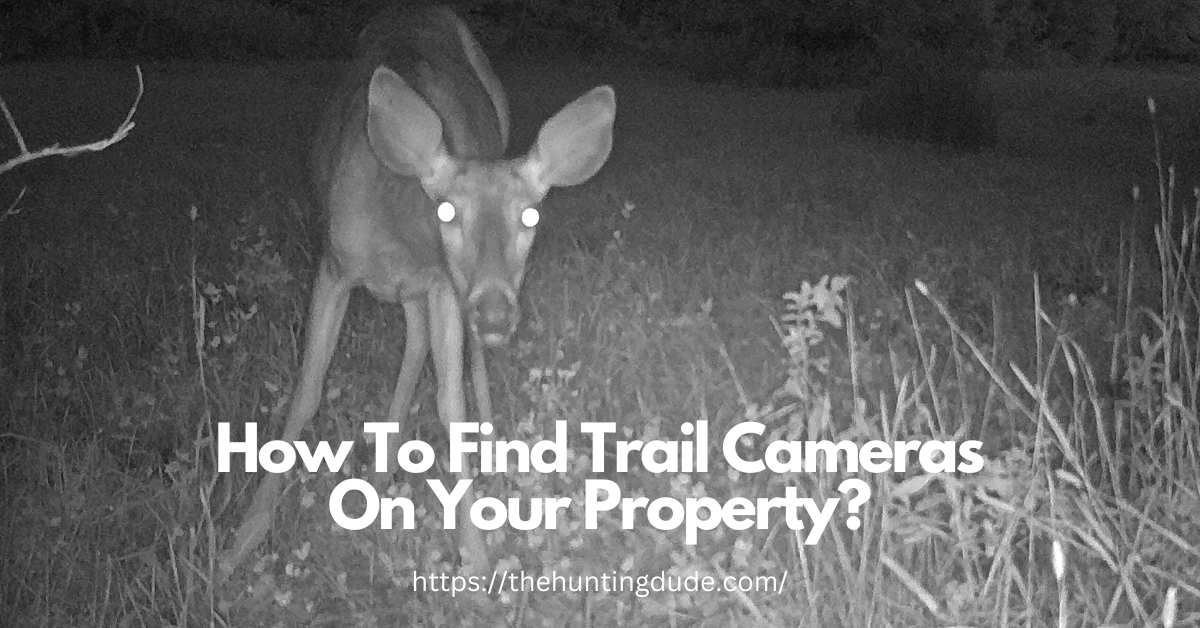People who are in awe of nature and enjoy hunting, wildlife, and outdoors use gadgets known as trail cameras. People use these cameras to capture breathtaking images of wildlife animals, to keep an eye on the animals, to keep an eye on intruders on private properties, and lastly for research purposes.
Good trail cameras can blend in the environment very well so that it does not spook out animals or intruders. Sometimes it can be hard to find these cameras, so how do you spot trail cameras on your property?
If you are a beginner and it is hard for you to spot these cameras on your property this is just the article for you to read.
10 Ways To Find Trail Cameras On Your Property
Following are some pro tips on How To Find Trail Cameras On Your Property:
1. Trees and Posts
The most common places to look for trail cameras are trees, posts, or elevated places. Trail cameras are usually placed on higher branches so they can cover more ground.
You should look for places where most animals might be found and have a good view as well.
2. Flashes
A camera might produce a white or red flash as to when it works. You can keep an eye on small flashes in trees or posts nearby. The camera will flash bright white light when recording videos or clicking pictures for pictures to be colorful.
Nowadays red glow infrared is more popular as it might not be that prominent so it would not spook animals. The camera produces red light at night. IR flash is dull yet detectable at night.
3. Water Sources
Another place is to look near a water source because one might want to capture beautiful shots of animals — for example, ponds, streams, lakes, and other bodies of water.
So, by looking around water sources, you have a high probability of finding trail cameras.
4. Tree Stands
Tree stands are placed high on trees for hunters to get a better view of animals and for better chances of shooting. Try to pinpoint areas where tree stands or ground blinds are now, have been in the past, or are most likely to be during the forthcoming hunting season when searching for a trail camera.
Deer stands or ground blinds are a fantastic spot to start your search because they are frequently found close to game pathways.
5. Food Sources
Animals are inclined to visit natural food resources as much as they do with natural water sources. These are the locations where food naturally grows. Farm fields, grass fields, or areas with lots of trees are examples of these types of locations.
Oak trees, for example, produce acorns, which are a favorite food of many animals. You need to locate areas with a large number of food supplies to locate trail cams. For instance, you could search for a location with a lot of oak trees.
6. GPS Tracker
If your trail camera has an app connection option, you can use the GPS data to determine where it is. The app will locate the trail camera using a GPS tracker and show you the image on your smartphone.
Perhaps this will also help you locate the trail camera if it is stolen or lost.
Since the GPS tracker is so small, it can be simply mounted to the trail camera and poses no issues for camouflaging the camera while it is in place.
Its compact size makes it simple to conceal inside the camera. Check to see if the GPS tracker is reliable and capable of withstanding tough weather conditions including wind, rain, and dust.
Some high-end trail cameras come with a GPS tracker inside the box. Cheap cameras do not have GPS trackers attached to them.
Therefore, if a GPS tracker is not already included with your camera, all you need to do is purchase one separately, and you are set to serve your goal exactly.
7. Reflections
On a sunny day, look for reflections that a shiny camera lens might form. Because naturally, you are not supposed to see any light reflecting in the woods as light is usually reflected only from polished and shiny surfaces.
This method is the least effective way to find trail cams on your property, as the exterior of the cameras is not shiny or reflective, and you might fail to see a reflection
8. Body and Color of the Camera
Firstly, cameras are usually rectangular or squared shaped so keep on the look for it, because usually these shapes with right angles are not formed naturally so you might get lucky and find a camera.
Secondly, these cameras come in colors that can camouflage easily in the woods. The human eye can distinguish a number of shades of green that appear impossible to the animals, despite the fact that the camera’s color allows it to blend in with the leaves, branches, and tree trunks in the wild.
So, if you look closely, you can see it. Its straps and lens can also be used to recognize it. There are other factors besides cameras that can produce color discrepancies on tree branches.
Most frequently, these cameras are mounted on a tree using a strap that contrasts with the color of the tree usually green, khaki, or black.
In other words, scanning for horizontal bands around or across trees or posts is another useful tactic because not only the camera but also the mounting strap shows the location.
9. Noisy or Noiseless Cameras
We have two types of cameras, the expensive, high quality ones that do not make any noise at all. On the other hand, we have low quality cameras that make some noise.
This factor is useful to spot trail cameras, but this is a disadvantage for hunters because this can alert and spook the animals.
10. Game Trails
Most animals, including deer, follow specific routes to travel from one location to another. Using these paths over and over again causes clear tracks in the forest that lack undergrowth. Such paths are called game trails.
You are most likely to spot trail cams along these game trails, which are there to keep an eye on the animals using the track.
Conclusion
In conclusion, it is surely hard to find trail cameras on your properties but if you follow these tips, it can be made easier so you can track wildlife, take beautiful pictures and videos of them and make sure there are no intruders on your land.
There are many potential places for you to look, for example, trees, posts, tree stands, near food and water resources.
Other than this you can notice certain things around you which are not natural such as white or red flashes, body of the camera, color of the camera, and straps of the cameras around the branches.
Lastly, you can add GPS trackers on all of your cameras so you can easily detect them using an app on your phone.
We hope these tips were useful for you and helped you in your purpose!

